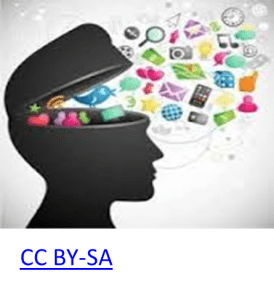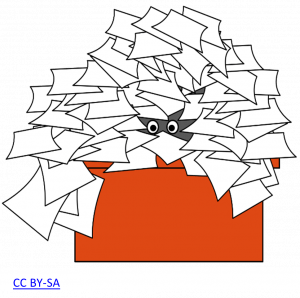 As teacher librarians, we are in a prime position to educate students and to teach them how to learn. A discussion board comment by Jannet Taylor (Taylor, 2019) during ETL 401 said it all: ‘I can’t teach a child everything they need to know for the future, but what I can do is teach them how to learn.’ Students need to understand the process of learning to function in this information-dense society (Kuhlthau, 1995). Exploring and collecting information is a vital part of the Information Search Process (ISP) and combines the cognitive, emotional, and physical dimensions of information (Kuhlthau, Heinström, & Todd, 2008). Inquiry learning and research are connected deeply: inquiry enables students to ask real questions which are answered through meaningful research (Maniotes & Kuhlthau, 2014). The Department of Education [DoE] (2020), acknowledges it is essential for students to develop skills in using information as part of their knowledge, skills, and attitudes needed for lifelong learning. Confidence and flexibility of thinking to use the information are the basis of a better quality of life (DoE, 2020). Although the commitment seems to be there to equip students with the skills, the reality in my opinion is different. In my experience as a classroom teacher and TL, students struggle to extract the information from the many sources available. Students are often overwhelmed and rely on copy and pasting!
As teacher librarians, we are in a prime position to educate students and to teach them how to learn. A discussion board comment by Jannet Taylor (Taylor, 2019) during ETL 401 said it all: ‘I can’t teach a child everything they need to know for the future, but what I can do is teach them how to learn.’ Students need to understand the process of learning to function in this information-dense society (Kuhlthau, 1995). Exploring and collecting information is a vital part of the Information Search Process (ISP) and combines the cognitive, emotional, and physical dimensions of information (Kuhlthau, Heinström, & Todd, 2008). Inquiry learning and research are connected deeply: inquiry enables students to ask real questions which are answered through meaningful research (Maniotes & Kuhlthau, 2014). The Department of Education [DoE] (2020), acknowledges it is essential for students to develop skills in using information as part of their knowledge, skills, and attitudes needed for lifelong learning. Confidence and flexibility of thinking to use the information are the basis of a better quality of life (DoE, 2020). Although the commitment seems to be there to equip students with the skills, the reality in my opinion is different. In my experience as a classroom teacher and TL, students struggle to extract the information from the many sources available. Students are often overwhelmed and rely on copy and pasting! So how can I as a TL, help students develop effective research skills? I can develop, in collaboration with other teachers, comprehensive library resource guides. By providing students with reliable search engines, websites, and general reference sources, highlighting skill development, creative and critical thinking, and information literacy, I can teach students how to become successful 21st-century learners. I am able to create meaningful guidance for students in an information-dense environment. I will continue to develop my critical evaluation skills to provide quality guides.
So how can I as a TL, help students develop effective research skills? I can develop, in collaboration with other teachers, comprehensive library resource guides. By providing students with reliable search engines, websites, and general reference sources, highlighting skill development, creative and critical thinking, and information literacy, I can teach students how to become successful 21st-century learners. I am able to create meaningful guidance for students in an information-dense environment. I will continue to develop my critical evaluation skills to provide quality guides.
The library resource guide (LRG) is for Stage 3 and covers the topic of Earth & Space, as part of the Science and Technology syllabus (New South Wales Education Standards Authority [NESA], 2017). The LRG provides students with a place to start, an indication of where to go. It is a map, for providing information destinations and added helpful hints (Kuntz, 2003). The home page gives an overview of all the tabs for students to use with a snapshot of their content. The resources limit, 15 in total, was a challenge but made me evaluate the reference sources I used better. Evaluating the content, the graphics, and the reading level was all essential in choosing the appropriate resources. I tried to include an array of levels and formats to give students a wide variety of resources while still focusing on those with factual information. To remind students of concepts we have discussed in the library, I included the ISP model and the appropriate section covered in each relevant part of the LRG. I have furthermore included the CRAAP test to remind students of the knowledge they already have and assist them in thinking critically about the information.
Students gain a deeper understanding of the content of the curriculum through meaningful and quality resources and subsequential research. A learning tool I will be using to educate and guide students.
References
Kuhlthau, C. H. (2008). The ‘information search process’ revisited: is the model still useful? Information Research, 13(4), Paper 355. Retrieved from http://InformationR.net/ir/13-4/paper355.html
Kuhlthau, C. (n.d.). The process of learning from information. School libraries worldwide, 1(1), 1-12. Retrieved from https://doms.csu.edu.au/csu/file/13e3058b-7e98-4dc7-b84b-812bf6a4acbf/1/kuhlthau5.pdf
Kuntz, K. (2003). Pathfinders: Helping students find paths to information. Retrieved from Information today: https://www.infotoday.com/MMSchools/may03/kuntz.shtml
Maniotes, L. & Kuhlthau, C.C. (2014). Making the shift. Knowledge Quest, 43(2), 9-17. Retrieved from https://files.eric.ed.gov/fulltext/EJ1045936.pdf
New South Wales Department of Education. (2020). The information process. Retrieved from Learning across the curriculum: https://education.nsw.gov.au/teaching-and-learning/curriculum/learning-across-the-curriculum/school-libraries/teaching-and-learning
New South Wales Education Standards Authority. (2017). Science and Technology K-6 syllabus 2017. Retrieved from New South Wales Education Standards Authority: https://educationstandards.nsw.edu.au/wps/portal/nesa/k-10/learning-areas/science/science-and-technology-k-6-new-syllabus
Taylor, J. (2019). Discussion Board. Thread 5.3b. Guided Inquiry. Retrieved from CSU: https://interact2.csu.edu.au/webapps/discussionboard